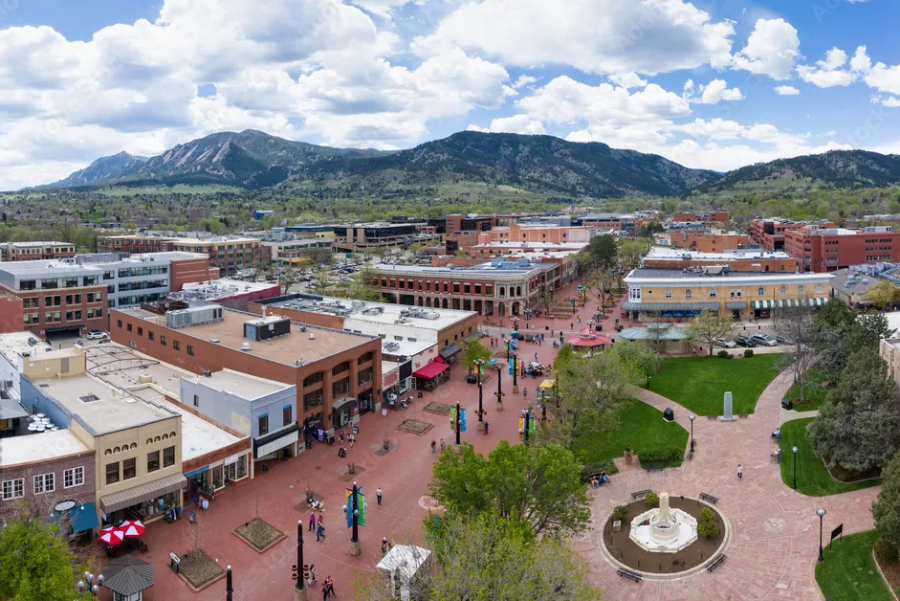
Courtesy of Espiegle (Adobe Stock)

Audio By Carbonatix
Wages nationwide have been struggling to keep up with the cost of living, especially in Colorado. However, the state’s three biggest metro areas outside of Denver boasted a rise in the average hourly wages, especially in one Front Range college town.
Boulder was ranked among the top-ten U.S. metros with growing wages from May 2019 to May 2024 in a new study put out by AlgoCademy, with Colorado Springs and Greeley joining Boulder in the top fifty. Using data from the Bureau of Labor Statistics (BLS), the study ranked nearly 400 metro areas in the United States based on the percentage average hourly wages increased during a five-year period.
According to AlgoCademy, the average hourly wage in Boulder rose by more than $12 from 2019 to 2024, from $32.29 to $44.51. That comes out to upwards of $92,600 a year and a 38 percent jump over five years, which was the fourth-highest increase nationwide among the metro areas in the study.
“From this data, it’s clear that strong wage growth isn’t confined to major urban hubs,” according to Mircea Dima, the AlgoCademy founder and CEO. “These trends reflect opportunities spreading beyond large metropolitan areas and can positively impact local communities by boosting spending power and attracting new talent and investment.”
Will you step up to support Westword this year?
At Westword, we’re small and scrappy — and we make the most of every dollar from our supporters. Right now, we’re $22,750 away from reaching our December 31 goal of $50,000. If you’ve ever learned something new, stayed informed, or felt more connected because of Westword, now’s the time to give back.
The next biggest hourly wage increase in Colorado was in Colorado Springs, where pay rose by $8, from $25.17 to $33.21 an hour, good for 21st nationwide.
Greeley came in third for the state and 44th nationally. The northern Colorado metro, also home to a major university, saw hourly wages go from $23.91 in 2019 to $31.05 in 2024, a nearly 30 percent increase and a difference of more than $7 an hour.
According to BLS data, the average hourly wage in the Denver area, which includes ten counties and the cities of Aurora, Centennial and Lakewood, was about $29.58 in 2019. That increased to $38.45 in 2024, a rise of nearly $9, a 30 percent increase. Denver wasn’t ranked by AlgoCademy, however.
The BLS defines the Boulder metro as Boulder County, which includes the namesake city, Longmont and cities like Louisville and Superior that are just west of Broomfield in the Denver metro area. Greeley’s metro is defined as Weld County, which is a huge chunk of northeast Colorado and full of small towns like Windsor, Fort Lupton and Hudson. Both counties have a population of about 330,000 residents, according to U.S. Census data.
The Colorado Springs metro consists of El Paso and Teller counties, which covers Colorado Springs and a stretch west of Pikes Peak, according to BLS area definitions. Most of the Colorado Springs metro population lives in El Paso County, with more than nearly 870,000 residents there compared to the roughly 25,000 in Teller County, according to Census data.
AlgoCademy doesn’t dig into why the three Colorado metros saw such profitable wage increases. All three areas host public universities, including the University of Northern Colorado in Greeley and University of Colorado campuses in Boulder and Colorado Springs.
The biggest increase nationwide took place in the San Jose-Sunnyvale-Santa Clara metro in California, which had a 44 percent spike from $40.37 an hour to $58.25. The two other metros that beat out Boulder were in Sebring, Florida, and Decatur, Illinois, which each have a population of about 100,000 people. Very few large metro areas made the top fifty, with Atlanta and Tampa Bay rounding out the bottom of the list.